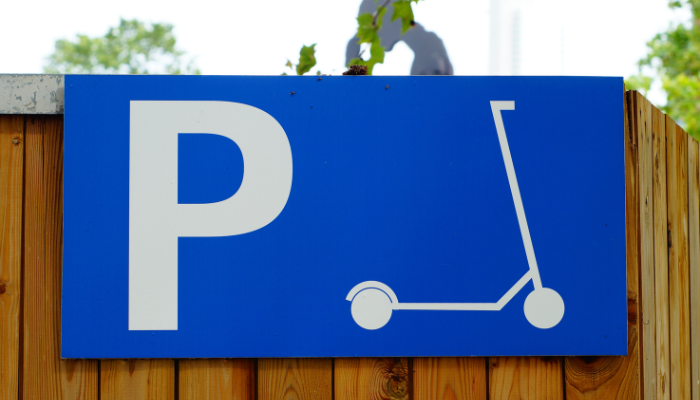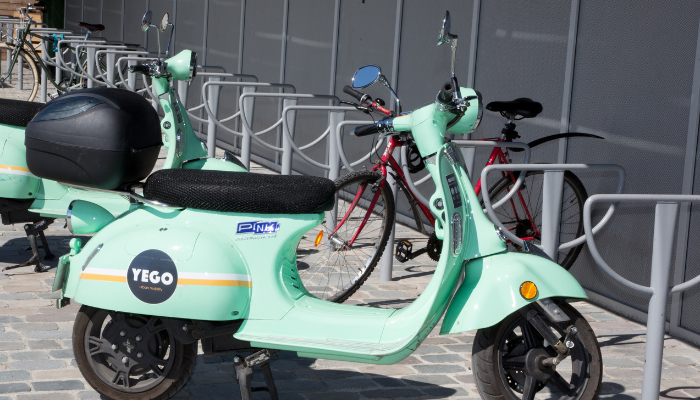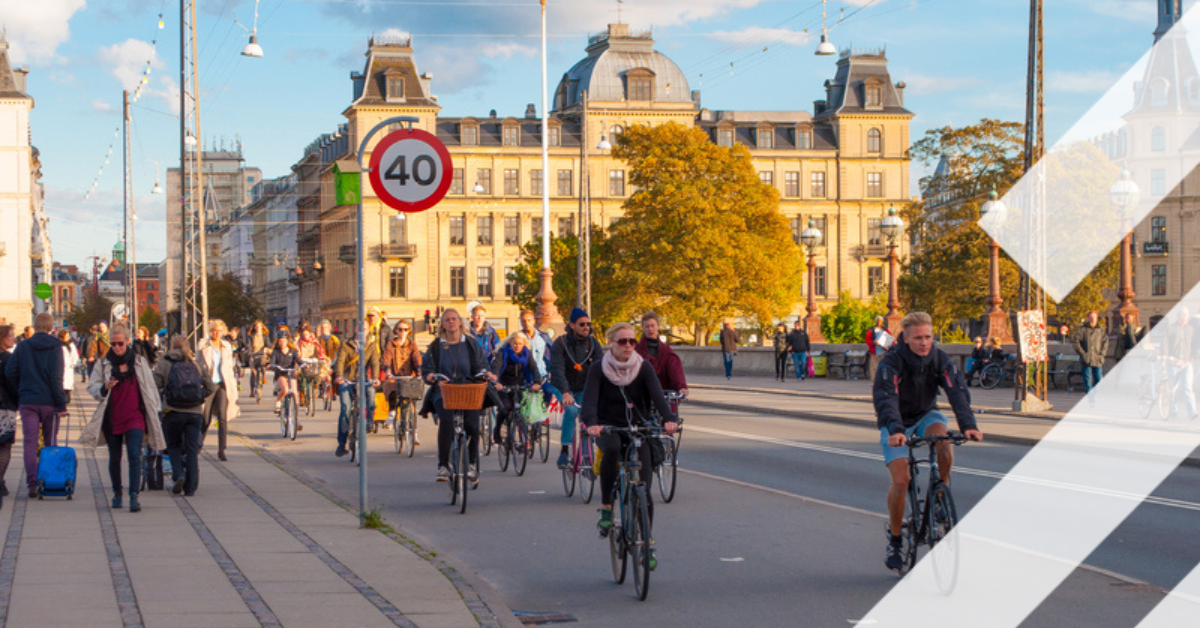Loading component...
Micromobility trends: what’s new in sustainable personal transport?
In keeping with its mission to keep its finger on the pulse of the smart mobility sector, Intertraffic asks micromobility expert Giles Bailey to provide the low-down on the latest developments in personal transport. It’s as much about new thinking as it is new modes.
Intertraffic: The concept of micromobility, traditionally, has been limited to bikes and scooters and their electric equivalents. Despite much talk of new and exciting developments that would soon be seen on the streets in the near future, that near future is now and there hasn’t been a new wave of personal mobility modes. Where, then, is the micromobility sector as we start the final quarter of 2024?
Giles Bailey: When I initially became more involved in this industry, I saw micromobility as e-scooters, which are very popular in many, many markets, and also quite controversial as well. But I think it's important to frame the debate around a slightly wider definition and context of what micromobility is. And what micromobility is, is smaller devices for getting around cities and suburbs and rural areas. That includes bicycles, which we've had for over 200 years, and in a sense they've just been rebranded as a form of micromobility. But scooters, electric bikes, trikes and cargo bikes, should all be considered in the micromobility debate, and not just the controversy around e-scooters.
I think it's important to frame any debate around a slightly wider definition and context of what micromobility is
On the other side of that comment is shared micromobility. Public and personal e-scooters have a slightly different kind of context in the debate. So micromobility is huge, growing and critical because why are we doing all of this? Sustainable cities? Climate change?

E-scooter parking spaces (photo by Wirestock)
Intertraffic: So where does that leave micromobility? Where and what is its place, so to speak, in today’s city?
GB: Taking London as an example, as I live there, it’s great to have the new Elizabeth line and there are new trains and tram networks in cities all over the world. That's actually very important so I am in no way trivializing it, but it's also really important to think about other modes that support classic public transport.
That's what's ultimately driving different kinds of needs in cities, especially for short distance. Critically, that comes down to walking, but actually we need these other modes that support sustainable, liveable cities and to grow these other modes in all of their forms and ownership models and context to make cities work. You can dive into individual cities and countries who are making progress or not making progress, but again, that evolution and growth is critical to make cities work.
Intertraffic: So is there anything new and interesting that might coming in in the next five years that might add to this narrative? There was talk of individual pods and solar-powered trikes not so long ago, but it seems as though the notion of micromobility has not continued on what was most definitely an upward path. Is that a fair analogy?
GB: I would say that it has continued on that path but really we need to look city by city, and country by country, because the play-out in micromobility has been, in the wider European context, very different in various countries, and that often comes back to support from cities. In the national context, it’s often due to the legality of what can be allowed on the street and how it can be used. I think there had initially been a narrative that the device would arrive on the streets, there’d be millions of them and that would be new transport. The realization is that life is not going to be like that. There will be lots of different devices, and the one that is probably the most popular, and continue to be the most popular, is the standard old bicycle that's been around for 200 years. Yes, there are different kinds of bicycles, but the basic idea of a personally owned bicycle that we use to get around town works and will continue to work.
I would say that micromobility has continued on that upward trajectory but really we need to look at it city by city and country by country, because the play-out in micromobility has been, in the wider European context, very different in various countries
Intertraffic: Electric bikes are becoming ever-more popular. Where are we in terms of the electric cargo bike?
GB: There are issues with the personally owned bicycle with regards to cycling long distances or for people that live in very hilly areas. Do I want an e-bike? Can it supplement my use of public transport, even driving into a park and ride site in other ways? This kind of thinking has led to the idea that, yes, maybe I should buy a scooter or maybe an e-scooter. This is determine by our dynamics about age and fitness and maybe a trike or a cargo bike would be more useful. In London you see parents taking their young children to school in a cargo bike, as has been popular in most European countries for years. And now we're increasingly seeing businesses starting to realize the advantages to cargo bikes in terms of parking, accessibility and sustainability.

A mother and child on a cargo bike (photo by Rpianoshow)
I think it's this broader trend of the growth of micromobility, and again, not just because it's interesting, but because it actually starts solving a whole host of issues in terms of mobility and sustainable cities, in the suburbs and rural areas. It's not just about the city centre.
What’s interesting is the broader trend of the growth of micromobility - not just because it's interesting, but because it actually starts solving a whole host of issues in terms of mobility and sustainable cities
Another important thing to note is that even if you don’t cycle you will still get the advantages of other people cycling, ie better-designed streetscapes for if you're going to walk or to use public transport or whatever, tend to go with better cycling and better cycling infrastructure. You get better pavements, better squares, and clearly you get less traffic ultimately.
Intertraffic: Are there any new trends or new ideas that have caught your eye in recent weeks or months?
GB: One of the trends I am keeping my eye on is being driven by TIER who are looking at introducing two new kinds of e-bikes. One's a slightly lower, chunkier bike, and one is a cross between a classic scooter and a bicycle that has three wheels, and on which you sit much lower. It’s not that either of those are the perfect solution, but they are starting to broaden the range because they realize that not everyone wants the traditional, standard bike for a whole host of reasons. Let's actually start giving people a choice and getting other people who aren't going to use a standard bike on a device that actually meets their needs.

Yego urban mobility scooters in Bordeaux (photo by Sylvain Robin)
TIER are bringing in two new types of e-bikes. One's a slightly lower, chunkier model, and one is a cross between a classic scooter and a bicycle that has three wheels Neither are perfect solutions but they are starting to broaden the range
Another key trend I wanted to mention was that I was in Berlin in May and what that city has done is very rigorously put out dedicated space for micromobility. They take two car parking spaces and put bollards around them as a dedicated parking space for shared personal bikes and scooters, with a branded pole as well, so it's very clearly designated. It’s not that exciting technologically, but it is actually exciting in terms of managing space and giving a real presence to micromobility parking, because the parking issue is often so problematic in cities because we had a mess of things everywhere.
Giles Bailey is the founder of Stratageeb.



